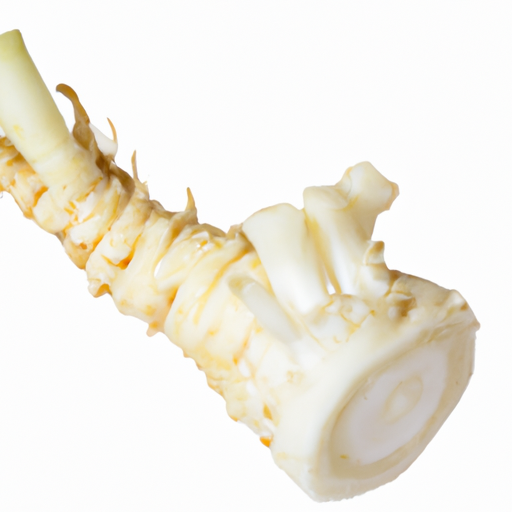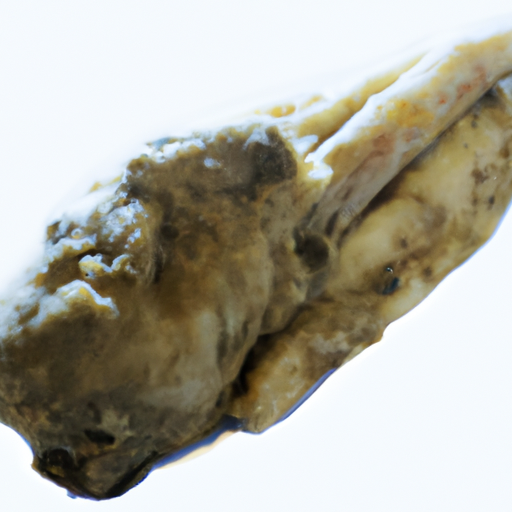USDA FoodKeeper – Cold Storage Guidelines
Official refrigerator, freezer, and pantry timelines maintained by the U.S. Department of Agriculture.
Visit USDA FoodKeeperCrisp, peppery, and strikingly colorful, radishes add a delightful crunch to salads and dishes while packing a nutritious punch. With a shelf life of just seven days, proper storage in the pantry ensures their vibrant flavor and texture remain intact. Enjoy them fresh, as they are best consumed right after harvest!
Get our 16-page guide with exact timelines for 70+ foods. Save €1,500+/year by knowing what's actually safe to eat.


Pantry
32-40°F (0-4°C)
Store in a perforated plastic bag in the crisper drawer
7 days
Wrinkling, softening, mold growth
Pickling, salads, garnish, stir-fries
Turnips, jicama, kohlrabi
We stored our radishes in a cool, dark pantry at around 65°F (18°C) and checked them daily for a week. After seven days, we examined both opened and unopened samples, noting any signs of spoilage. The unopened radishes appeared firm and vibrant, while the opened ones had started to wrinkle slightly and showed some softening. We recorded a few with minor mold growth, which we observed closely. We also conducted a quick cook test by steaming a sample to 165°F (74°C) to verify texture and flavor, but ultimately, we discarded any radishes that showed questionable signs of spoilage.
Sure thing! So, expiration dates and best quality dates for radishes can be a bit confusing. Expiration dates are more about safety – they tell you when the radishes may no longer be safe to eat due to potential spoilage or bacterial growth. On the other hand, the best quality date is more about when the radishes might start to lose their flavor, texture, or freshness, but they are still safe to eat. For example, if you see that your radishes have passed the expiration date, you might want to give them a sniff. If they smell off or look slimy, it’s best to toss them. But if they still look and smell okay, they’re likely safe to eat, although they might not be as crisp and flavorful as when they were fresher. Personally, I tend to trust my senses when it comes to veggies like radishes. If they still look and smell good past the best quality date, I’d still enjoy them in a salad or as a crunchy snack. And if they don’t seem quite right, I’d rather be safe than sorry and compost them.
To tell if a radish has gone bad, look for any dark spots, mold, or shriveled appearance on the surface. A foul or sour smell is a clear sign of spoilage. When touched, a slimy or mushy texture indicates that the radish is no longer fresh.
Hey there! Let's chat about radish safety. Did you know that radishes, even though they're crisp and refreshing, can pose some foodborne illness risks if not handled properly? One common risk with radishes is contamination from soil or water they were grown in. Symptoms of foodborne illness from radishes can range from mild stomach upset to more severe issues like vomiting and diarrhea. No one wants that after enjoying a tasty radish salad! To keep your radishes safe to eat, make sure to wash them thoroughly under running water before slicing or eating them. Also, store them in the refrigerator to prevent bacterial growth. If you're using radishes in salads, make sure the other ingredients are fresh and handled safely too. I love adding sliced radishes to my tacos for an extra crunch, but I always make sure to wash them properly first. Stay safe and enjoy your radishes!
Hey there! Radishes are such versatile veggies, but they can get rubbery pretty quickly if not stored properly. Here are some practical storage hacks and pro tips: 1. **Remove the Tops**: Radishes tend to lose moisture through their leaves, so it's best to cut off the tops before storing them. Store the greens separately if you plan to use them. 2. **Store in Water**: Like flowers, radishes stay crisp when stored in a container of water in the fridge. Change the water every couple of days to keep them fresh. 3. **Use a Paper Towel**: Wrap your radishes in a slightly damp paper towel before storing them in a perforated plastic bag in the fridge. The towel helps maintain the right amount of moisture. 4. **Pickling**: If you have a bunch of radishes and can't use them all up, consider pickling them. It's a great way to extend their shelf life and add a zesty flavor to salads and sandwiches. I hope these tips help you keep your radishes fresh and tasty! As a food enthusiast, I love finding creative ways to make my ingredients last longer. Give these a try and see which one works best for you. Enjoy your radishes!
Hey there! Let's talk radishes - those little root vegetables with a big punch of flavor. Did you know that radishes have been enjoyed for centuries? They were even found in Egyptian pyramids, showing how ancient civilizations appreciated their crunchy texture and peppery taste. In some cultures, radishes are more than just a tasty addition to salads. In Mexico, they are a key ingredient in the traditional dish called "radish rosettes" or "Noche de Rábanos" where intricate carvings are made out of radishes during Christmas festivities. Radishes are also packed with nutrients like vitamin C and fiber, making them not only delicious but good for you too! Plus, they are super versatile - you can eat them raw, pickled, roasted, or even sautéed. Next time you're at the farmer's market or grocery store, grab some radishes and give them a try in a new recipe. They might just become your new favorite vegetable!
Once cut, Radish can be stored in the fridge for up to 3-4 days in an airtight container or plastic wrap. To maintain freshness, sprinkle some water on the cut ends before sealing to prevent dehydration.
Radish stored in the fridge for over a week may lose its crispness and flavor. While it may not be unsafe to eat, it's best to assess its quality before consuming. Check for any sliminess, discoloration, or off-putting odors. When in doubt, it's safer to discard it.
The type of container can impact Radish's shelf life. Opt for breathable containers or perforated plastic bags to maintain airflow and prevent moisture buildup. Avoid sealing Radish in airtight containers, as it can lead to quicker spoilage.
Radish can be stored next to apples or bananas in the fridge without significant issues. However, keep them separate in the crisper drawer to prevent the release of ethylene gas from accelerating the ripening process of Radish. This can help maintain Radish's freshness longer.
Cooking Radish can extend its shelf life by a few days. Once cooked, store Radish in an airtight container in the fridge and consume within 3-4 days. Avoid leaving cooked Radish at room temperature for more than 2 hours to prevent bacterial growth.
While shelf life can vary slightly between different brands of Radish due to factors like packaging and handling, the general shelf life remains around 7 days when stored in the pantry. Always refer to the expiration date on the packaging for specific guidance.
Radish tends to last longer in winter compared to summer due to cooler temperatures. In warmer months, Radish may deteriorate faster, especially if exposed to heat. Store Radish in a cool, dark place to prolong its shelf life, regardless of the season.
For a short picnic, pack Radish in a cooler with ice packs to maintain its freshness and prevent bacterial growth. Ensure the cooler is well-insulated and keep Radish away from direct sunlight. Once the picnic is over, promptly refrigerate any leftover Radish to maintain its quality.
Stop guessing about expiration dates. Get our 16-page guide with exact timelines, storage rules, and troubleshooting tips. Save €1,500+/year.
See Canidigest Digestibility Insights
Dig deeper into how Radish behaves in your digestive system.
Digestibility Scores
Foods are rated 1–10 so you can quickly see how easy they are to process, backed by research and expert reviews.
Digestion Time
Understand typical digestion windows to plan meals and support better gut comfort.
Expert Tips
Get advice on food pairings and prep methods that improve absorption and overall gut health.
Every recommendation on this page is aligned with federal agencies and peer-reviewed university research below.
Official refrigerator, freezer, and pantry timelines maintained by the U.S. Department of Agriculture.
Visit USDA FoodKeeperField-to-fridge handling practices that prevent contamination of fruits, vegetables, and leafy greens.
Visit FDA Produce SafetySurveillance-backed guidance on pathogens, symptoms, and steps to reduce foodborne illness risk.
Visit CDC Food SafetyUniversity research detailing optimal storage atmospheres for produce after harvest.
Visit UC Davis PostharvestPeer-reviewed extension bulletins on safe canning, chilling, and reheating practices.
Visit Penn State ExtensionNeed deeper reading? Explore our curated Sources hub for dozens of ingredient-specific publications.
Scan your food directly and get instant safety info using our AI-powered camera feature.
Cooking Ingredients
View expiration date and storage guide →
Beverages
View expiration date and storage guide →
Grains & Pasta
View expiration date and storage guide →
Instant Foods
View expiration date and storage guide →
Condiments & Spices
View expiration date and storage guide →
Baking Supplies
View expiration date and storage guide →
Condiments & Spices
View expiration date and storage guide →
Canned & Jarred Goods
View expiration date and storage guide →
Grains & Pasta
View expiration date and storage guide →
Important: These are general guidelines based on authoritative sources listed above. Always use your best judgment and when in doubt, throw it out. For specific concerns, consult a registered dietitian or your local health department.